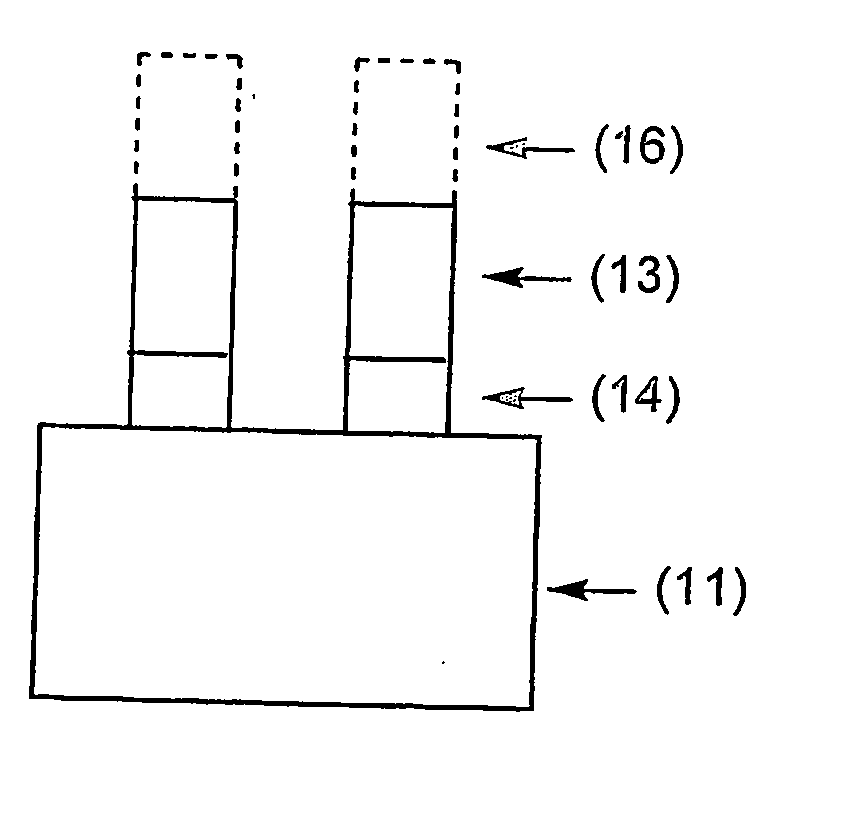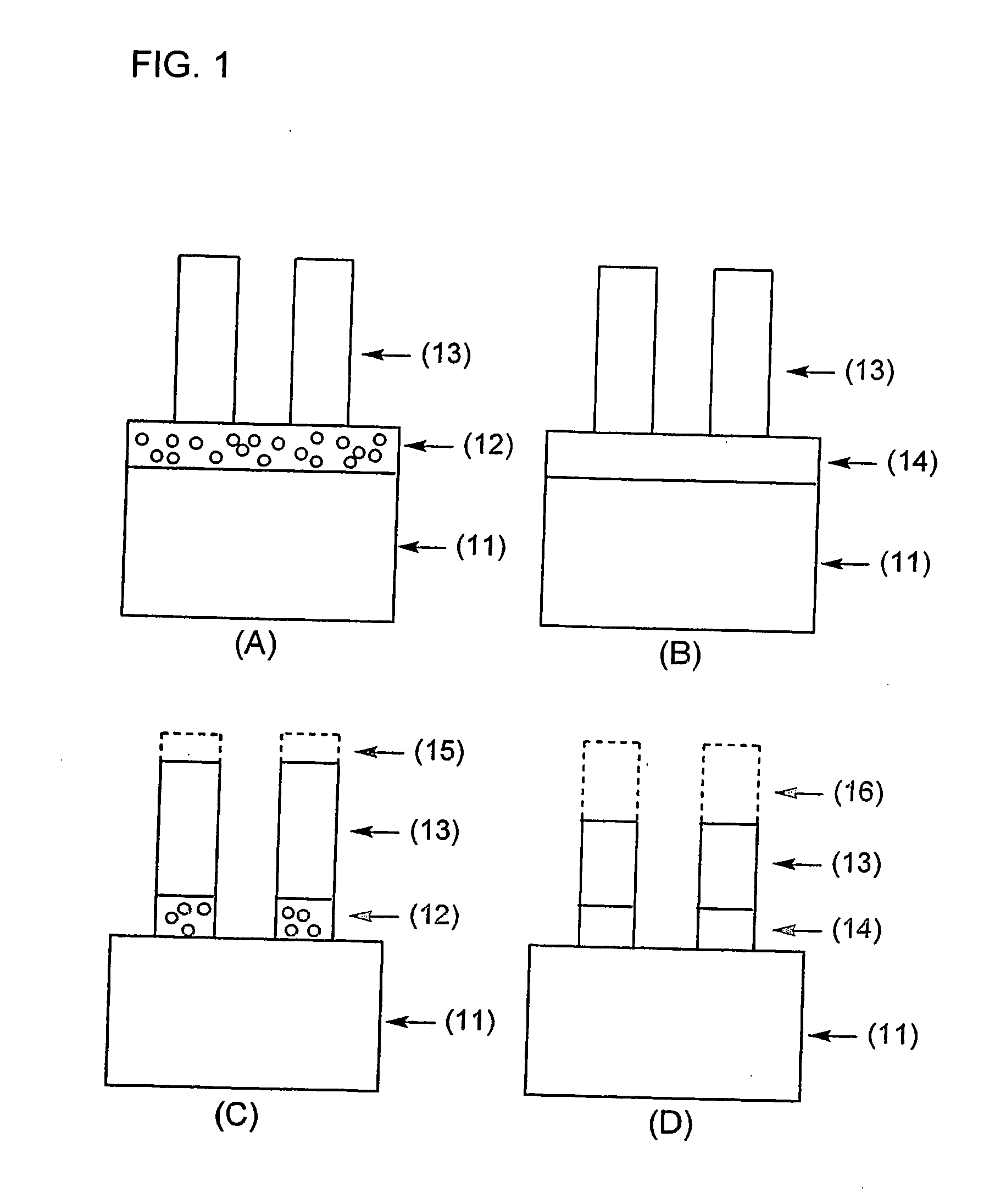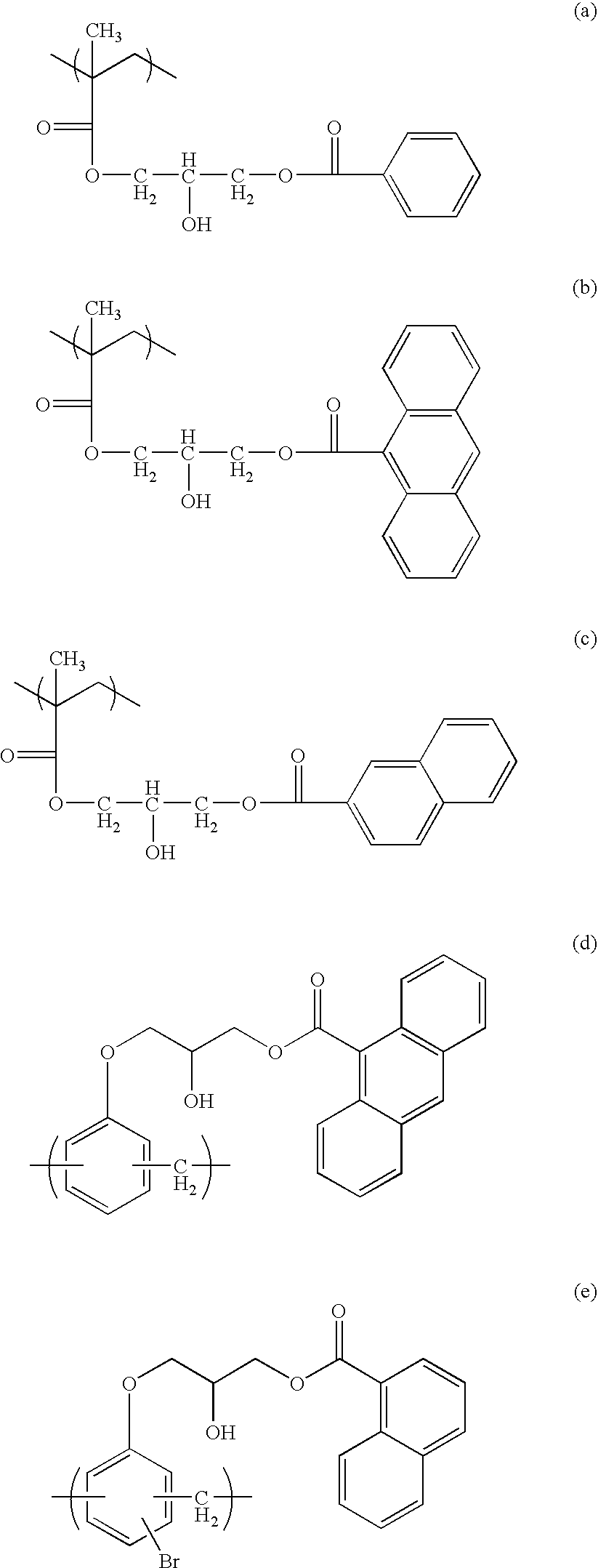Porous underlayer film and underlayer film forming composition used for forming the same
- Summary
- Abstract
- Description
- Claims
- Application Information
AI Technical Summary
Benefits of technology
Problems solved by technology
Method used
Image
Examples
synthetic example 1
[0103] In 27.91 g of propylene glycol monomethyl ether, 20.93 g of 2-hydroxypropyl methacrylate and 6.98 g of benzyl methacrylate were dissolved, and nitrogen was flowed to the reaction solution for 30 minutes, then the temperature was raised to 70° C. While the reaction solution was maintained at 70° C., 0.3 g of azobisisobutyronitrile was added. Then, the solution was stirred under nitrogen atmosphere at 70° C. for 24 hours to obtain a solution of a copolymer of 2-hydroxypropyl methacrylate with benzyl methacrylate. GPC analysis of the resulting polymer showed that it had a weight average molecular weight of 15000 in terms of standard polystyrene.
synthetic example 2
[0104] In 30 g of ethyl lactate, 30 g of 2-hydroxyethyl acrylate was dissolved, and nitrogen was flowed to the reaction solution for 30 minutes, then the temperature was raised to 70° C. While the reaction solution was maintained at 70° C., 0.3 g of azobisisobutyronitrile was added. Then, the solution was stirred under nitrogen atmosphere at 70° C. for 24 hours to obtain a solution of poly(2-hydroxyethyl)acrylate. GPC analysis of the resulting polymer showed that it had a weight average molecular weight of 9800 in terms of standard polystyrene.
example 1
[0105] To 10 g of a solution containing 5 g of the polymer obtained in Synthesis Example 1, 1.15 g of hexamethoxy methyl melamine, 0.012 g of pyridinium-p-toluenesulfonic acid, 0.77 g of propylene glycol monomethyl ether and 8.66 g of dimethylsulfoxide were added to obtain 30% solution. Then, 0.309 g (5% in solid content) of blowing agent: 4,4-oxybisbenzene sulfonyl hydrazide was added thereto. Thereafter, the resulting solution was filtered through a micro filter made of polyethylene having a pore diameter of 0.20 μm to prepare an underlayer coating forming composition solution.
PUM
 Login to View More
Login to View More Abstract
Description
Claims
Application Information
 Login to View More
Login to View More - R&D
- Intellectual Property
- Life Sciences
- Materials
- Tech Scout
- Unparalleled Data Quality
- Higher Quality Content
- 60% Fewer Hallucinations
Browse by: Latest US Patents, China's latest patents, Technical Efficacy Thesaurus, Application Domain, Technology Topic, Popular Technical Reports.
© 2025 PatSnap. All rights reserved.Legal|Privacy policy|Modern Slavery Act Transparency Statement|Sitemap|About US| Contact US: help@patsnap.com



